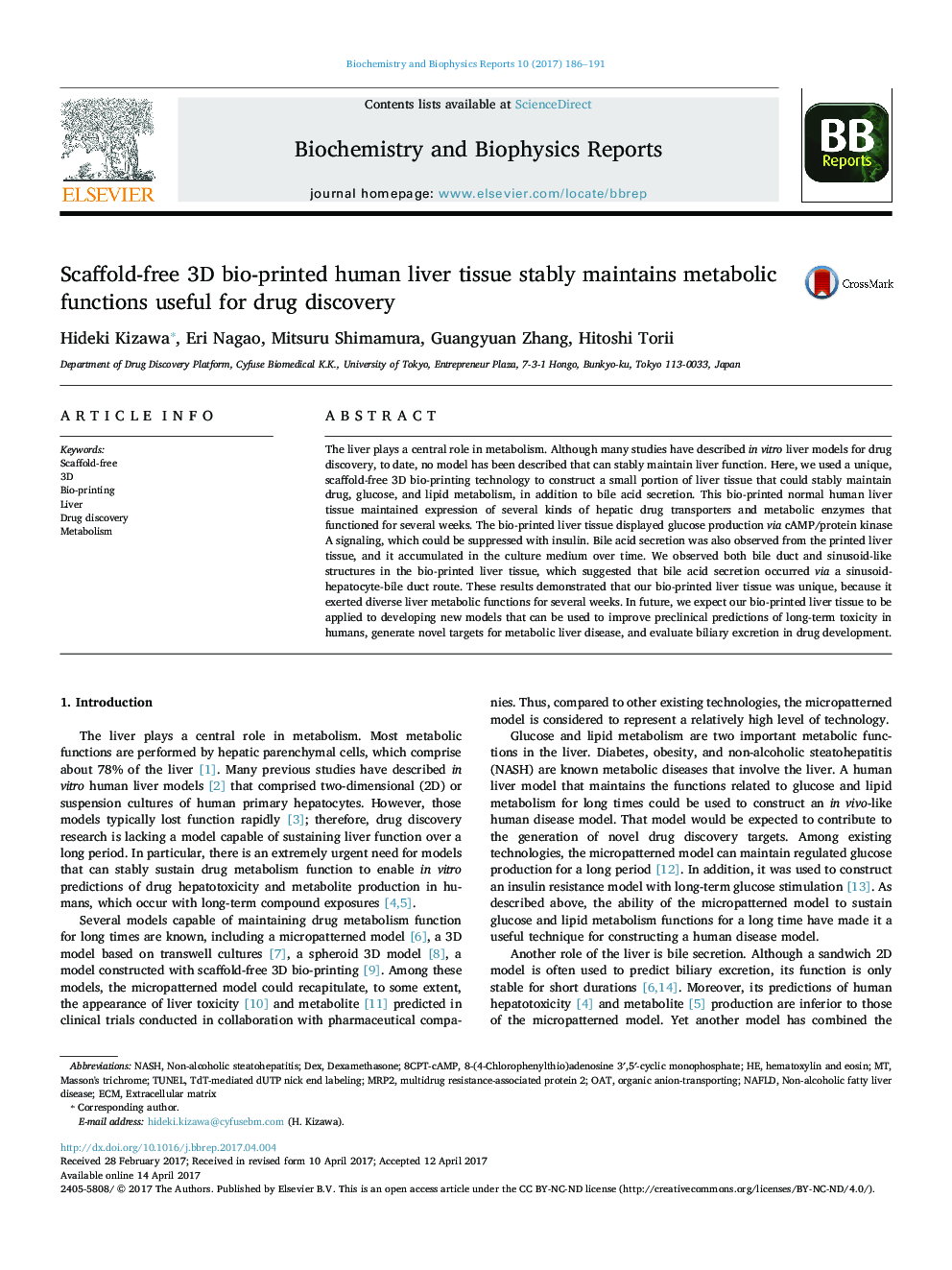| کد مقاله | کد نشریه | سال انتشار | مقاله انگلیسی | نسخه تمام متن |
|---|---|---|---|---|
| 5507010 | 1536898 | 2017 | 6 صفحه PDF | دانلود رایگان |

- We constructed a unique human mini-liver model with 3D bio-printing technology.
- Liver model maintained the drug-metabolizing functions for at least 7 weeks.
- Liver model cultured for 11 weeks could regulate glucose production by insulin.
- Liver model maintained NAFLD disease pathology for at least 3 weeks.
- Liver model cultured for at least 3 weeks could secrete bile acid in the medium.
The liver plays a central role in metabolism. Although many studies have described in vitro liver models for drug discovery, to date, no model has been described that can stably maintain liver function. Here, we used a unique, scaffold-free 3D bio-printing technology to construct a small portion of liver tissue that could stably maintain drug, glucose, and lipid metabolism, in addition to bile acid secretion. This bio-printed normal human liver tissue maintained expression of several kinds of hepatic drug transporters and metabolic enzymes that functioned for several weeks. The bio-printed liver tissue displayed glucose production via cAMP/protein kinase A signaling, which could be suppressed with insulin. Bile acid secretion was also observed from the printed liver tissue, and it accumulated in the culture medium over time. We observed both bile duct and sinusoid-like structures in the bio-printed liver tissue, which suggested that bile acid secretion occurred via a sinusoid-hepatocyte-bile duct route. These results demonstrated that our bio-printed liver tissue was unique, because it exerted diverse liver metabolic functions for several weeks. In future, we expect our bio-printed liver tissue to be applied to developing new models that can be used to improve preclinical predictions of long-term toxicity in humans, generate novel targets for metabolic liver disease, and evaluate biliary excretion in drug development.
Journal: Biochemistry and Biophysics Reports - Volume 10, July 2017, Pages 186-191